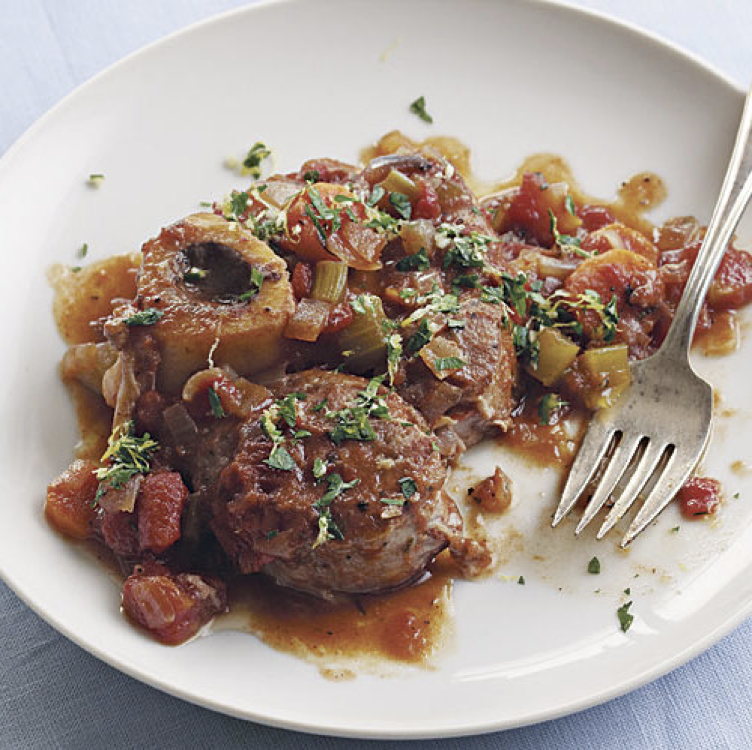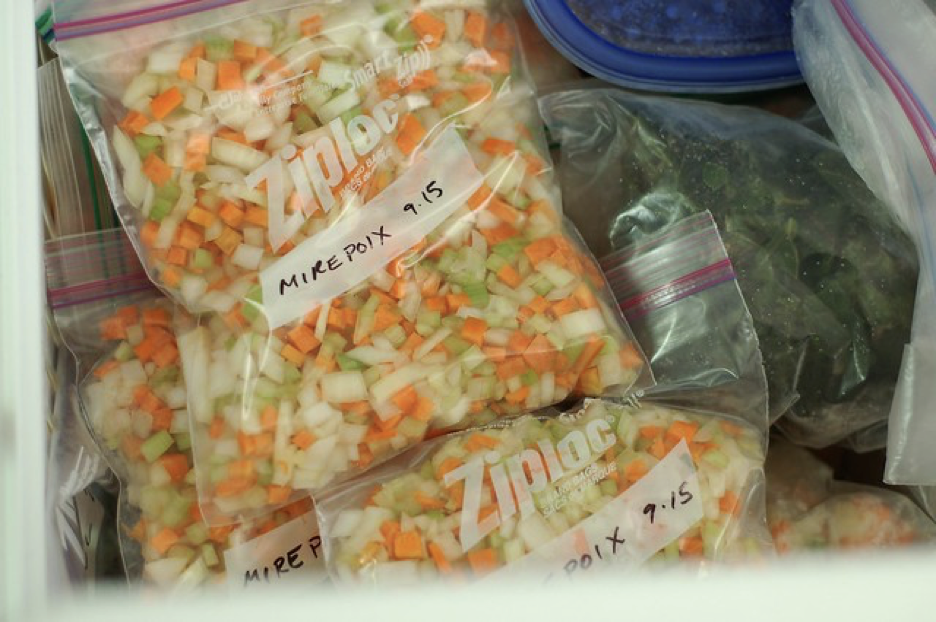MIREPOIX WORKS MAGIC!
Mirepoix (pronounced meer-PWAH). It works magic in any recipe and is a basic basic basic cooking skill. You’ve likely been making it for years without knowing its proper name. It's the name of an aromatic flavor base commonly used in French cooking.

The word mirepoix is the namesake of a French aristocrat, the duc de Lévis-Mirepoix. The cook for this 18th-century Duke is supposedly the person who is credited with creating this staple of French cuisine.
What exactly is a mirepoix? According to seasoned chefs the world over, mirepoix is considered a foundation or a base. It’s described as "a combination of ingredients found in almost every chef's repertoire. It sets the stage for good things to come."
The mixture consists of just three vegetables: onions, carrots, and celery. Does that mix sound familiar? It’s traditionally THE classic combination found in most stews, soups, and even sauces.

Prepping mirepoix is easy. Peel your onions and carrots and clean your celery. You’ll want to pay specific attention to how large or small to cut them, depending on the recipe. For instance, for chicken soup, you'll want to go big so that all those veggies stay intact. But for a slow braise like osso bucco or bolognese, you’ll want to do a small dice so that the vegetables almost completely disintegrate, becoming one with the sauce.
Before I go on with the mirepoix business, are you acquainted with osso bucco and bolognese? Osso bucco, a specialty of Lombard cuisine, is cross-cut veal shanks braised with vegetables, white wine and broth. Bolognese (aka ragu) is a meat-based sauce in Italian cuisine, customarily used to dress tagliatelle.

With that out of the way, back to mirepoix: Fresh thyme is the herb to add to mirepoix, so if you have any on hand, be sure to sprinkle a pinch or two into it. The traditional mix of your onions, celery, and carrots is a ratio of 2:1:1. The overall idea is to cook your diced veggies in butter, low and slow, to sweeten the ingredients rather than caramelize them. And there you have it: all the facts on what exactly a standard mirepoix is.
There’s one more mirepoix cooking technique to know, though, and that’s what comes first when making a recipe that uses both the mirepoix and meat. Do you cook the mirepoix and meat separately (if so, which one first?) or together? While there’s no hard and fast rule to answer these questions, it is customary to sear the meat first. Then you remove it from the skillet to a clean plate, and incorporate the fat from the meat with your butter to cook the onions, carrots, and celery.
Lastly, those of you already familiar with mirepoix probably know that several ethnicities have their own version of this cooking magic. Besides this classic French mirepoix, other combinations are:

THE HOLY TRINITY (CAJUN): onion + celery + green bell pepper with olive oil or butter
SOFFRITTO (ITALIAN): onions + carrots + celery with olive oil (often contains parsley)
SOFRITO (LATIN): onions + garlic + bell peppers + tomatoes with olive oil
CHINESE: garlic + scallions + ginger with cooking oil
INDIAN: onion + garlic + chilies + ginger with ghee

I’ll close this cooking tutorial with an absolutely fantastic mirepoix-related idea! How about we save some time and energy and make up a big batch of mirepoix and freeze it in amounts called for in your favorite or most-used recipes? Wish I’d thought of this myself, but it’s actually a common trick—we can thank the cooking section of the New York Times for sharing it!

The word mirepoix is the namesake of a French aristocrat, the duc de Lévis-Mirepoix. The cook for this 18th-century Duke is supposedly the person who is credited with creating this staple of French cuisine.
What exactly is a mirepoix? According to seasoned chefs the world over, mirepoix is considered a foundation or a base. It’s described as "a combination of ingredients found in almost every chef's repertoire. It sets the stage for good things to come."
The mixture consists of just three vegetables: onions, carrots, and celery. Does that mix sound familiar? It’s traditionally THE classic combination found in most stews, soups, and even sauces.

Prepping mirepoix is easy. Peel your onions and carrots and clean your celery. You’ll want to pay specific attention to how large or small to cut them, depending on the recipe. For instance, for chicken soup, you'll want to go big so that all those veggies stay intact. But for a slow braise like osso bucco or bolognese, you’ll want to do a small dice so that the vegetables almost completely disintegrate, becoming one with the sauce.
Before I go on with the mirepoix business, are you acquainted with osso bucco and bolognese? Osso bucco, a specialty of Lombard cuisine, is cross-cut veal shanks braised with vegetables, white wine and broth. Bolognese (aka ragu) is a meat-based sauce in Italian cuisine, customarily used to dress tagliatelle.

With that out of the way, back to mirepoix: Fresh thyme is the herb to add to mirepoix, so if you have any on hand, be sure to sprinkle a pinch or two into it. The traditional mix of your onions, celery, and carrots is a ratio of 2:1:1. The overall idea is to cook your diced veggies in butter, low and slow, to sweeten the ingredients rather than caramelize them. And there you have it: all the facts on what exactly a standard mirepoix is.
There’s one more mirepoix cooking technique to know, though, and that’s what comes first when making a recipe that uses both the mirepoix and meat. Do you cook the mirepoix and meat separately (if so, which one first?) or together? While there’s no hard and fast rule to answer these questions, it is customary to sear the meat first. Then you remove it from the skillet to a clean plate, and incorporate the fat from the meat with your butter to cook the onions, carrots, and celery.
Lastly, those of you already familiar with mirepoix probably know that several ethnicities have their own version of this cooking magic. Besides this classic French mirepoix, other combinations are:

THE HOLY TRINITY (CAJUN): onion + celery + green bell pepper with olive oil or butter
SOFFRITTO (ITALIAN): onions + carrots + celery with olive oil (often contains parsley)
SOFRITO (LATIN): onions + garlic + bell peppers + tomatoes with olive oil
CHINESE: garlic + scallions + ginger with cooking oil
INDIAN: onion + garlic + chilies + ginger with ghee

I’ll close this cooking tutorial with an absolutely fantastic mirepoix-related idea! How about we save some time and energy and make up a big batch of mirepoix and freeze it in amounts called for in your favorite or most-used recipes? Wish I’d thought of this myself, but it’s actually a common trick—we can thank the cooking section of the New York Times for sharing it!
Sources:
- www.boston.com
- www.theforkedspoon.com
- www.finecooking.com
- www.onions-usa.org
- www.thegardenofeating.org
 Alice Osborne
Alice Osborne
Weekly Newsletter Contributor since 2006
Email the author! alice@dvo.com
